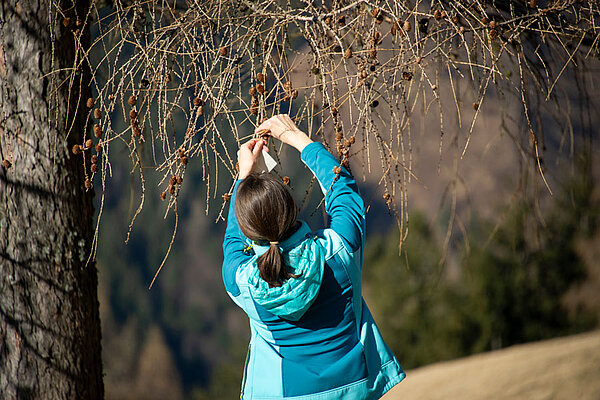Embarking on understanding what seed collection is all about within the OptFORESTS project opens doors to grasping the intricate processes vital to preserving forest ecosystems and increasing their resilience to climate change. From fieldwork in rugged terrain to managing bureaucratic hurdles, every step of the seed collection activity is of immense importance in working towards greater forest resilience.
In this article, we talk to Marjana Westergren, one of the lead researchers and WP leaders involved in the OptFORESTS project, to learn more about the practicalities and importance of seed collection. Hailing from Slovenia, Marjana sheds light on the vital role of this activity in safeguarding and revitalising forests, offering an insight into the diligent efforts of her team at the Slovenian Forestry Institute.

Can you provide us with an overview of the seed collection process? What are the key components involved?
In seed collection, we start by contacting local foresters to assess if it's a mast year and secure permits for collection. Timing is crucial, and we coordinate closely with foresters. Then, we head to the forest, gathering seeds under trees or cutting branches. We're meticulous, ensuring samples from at least 20 trees, spaced apart. Samples, along with genetic material, are sent for analysis. After a few days' work, we store seeds appropriately. Distribution follows guidelines, with careful labelling, and seeds are sent to nurseries. Every step matters; skipping any could lead to rejection at borders. Field staff handle collection and permits, while lab staff conduct tests and handle administrative tasks.
Can you elaborate on your fieldwork? What species are you targeting, and what specific factors in your work area affect seed collection, management, and testing?
Our typical day starts early, around 7 am, at the institute before we head out to the forest, which can be a journey of up to 2.5 hours. Once there, we navigate the terrain, using our phones to track our progress and ensure we cover the necessary ground. Amidst conversations and observations, we gather seeds and often have our lunch amidst the trees. By around 4 pm, we're usually wrapping up and heading back to Ljubljana, though if we're working in a distant location, we might not return until late.
Our recent seed collection expeditions, particularly in alpine areas, presented physical challenges due to steep slopes and sparse vegetation, but fortunately, weather conditions were favourable with minimal snowfall. In Slovenia, we have collected seeds from various tree species like beech, sessile oak, downy oak, larch, and black pine. However, our work is not done yet; we still need to gather seeds of maple, linden, and chestnut in the autumn.
Our collection efforts span both core and marginal populations across diverse climates, from sub-Mediterranean to alpine regions. These selections were made based on genetic data and expert insights, aligning with the design of our common gardens and testing protocols.
In the scope of OptFORESTS, could you delve deeper into the purpose of seed collection? What are the overarching goals?
We are collecting seeds as part of OptFORESTS to grow seedlings for experiments in common gardens (currently 29 are planned in 16 countries within and outside the project consortium) and growth chambers. These experiments help us understand how climate change affects the germination and growth of different tree species. By studying these seeds in various simulated climates, we can see how they adapt and survive. Our goal is to learn more about the differences between core and marginal populations within the same genetic lineage.
For example, we are growing trees like maritime pine from Portugal and France in Scotland, and beech trees in the boreal regions of Finland. We are collecting seeds from 12 different tree species and 10 populations of each. However, we will only plant eight provenances because getting enough quality seeds can be tricky, especially from marginal populations. Sometimes, like with Eastern European larch, we cannot find enough seeds due to poor mast years. Overall, we are aiming to plant seedlings from five tree species with eight provenances per common garden.
Have you spotted any warning signs during seed collection that might indicate future challenges for forests and their management?
In light of the challenges we face in seed collection, particularly with the unpredictable nature of mast years, I am concerned about the future of natural forest regeneration and our ability to gather seeds for replanting efforts. Seed availability is poised to become a significant obstacle for both natural and artificial forest restoration in the years to come. Climate change introduces numerous risks to seed production, including disruptions to the timing of pollination, changes in seed maturation processes, and increased tree stress from prolonged droughts and late frosts. These factors will undoubtedly complicate the task of sourcing enough high-quality seeds for effective forest management. As a result, artificial regeneration and restoration projects are likely to become even more costly in the future.

